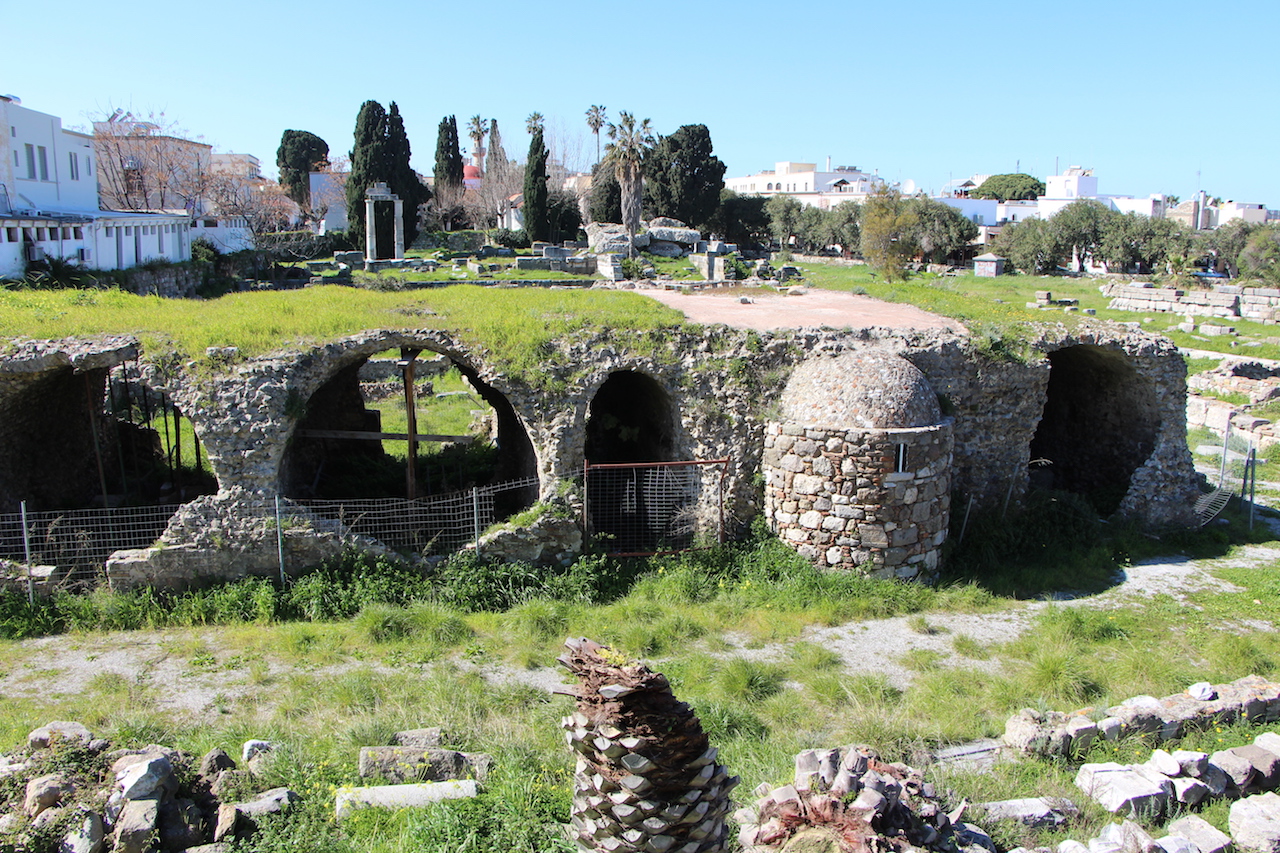After the earthquake of April 23rd, 1933, which caused the destruction of a big part of Kos Town, the Eastern Archaeological area, that is situated in the walled city or the city of the knights in the harbour zone, was excavated almost entirely, bringing to light the Eastern half of the port district and the extreme Northern section of the ancient city.
In the Eastern Archaeological area, you will find the ruins of imposing buildings, such as 1) The sanctuary of Aphrodite 2) the Harbour Basilica 3) the Sancturay of Herakles 4) the Baptistery 5) the Harbour Stoa 6) the Fortification 7) the Insulae and 8) the Agora.
Brief history
Human habitation on the site of the present town of Kos is attested from the end of the Early Bronze Age (2.300-2.200 BC). In the Minoan and Mycenaean periods (2nd millenium BC) the settlement developed into an important centre. This shrunk during the Geometric period (10th-8th century BC) but flourished again in Archaic and Classical times (7th-5th century BC). The most important event in its history is the synoecism of 366/5 BC, when the earlier communities on the island united to found the new city at the NE tip of KOS. The basic structures of this city were preserved unchanged into Early Christian times (6th century AD). During the Middle Ages, the city of Kos was confined within the bounds of the walled burg of the Knights of St John, subsequently known as the Chora neighbourhood.
On 23 April 1933, Kos was hit by a catastrophic earthquake of 6.6 on the Richter scale, which razed the town to the ground. The neighbourhood that suffered the worst damage was Chora. On this site of 30.000 square meters, currently known as the Eastern archaeological area or Harbour quarter – agora, the Italian Archaeological Service carried out extensive excavations between 1934 and 1942, bringing to light a large part of the ancient city, mainly from the Hellenistic period and Late Antiquity.
The harbour quarter was thus uncovered, including sanctuaries and public buildings – the double sanctuary of Aphrodite (item 1), the sanctuary of Herakles (item 3), a sanctuary of an unknown deity, the Harbour stoa (item 5), the basilica (item 2), the baptistery (item 4) – as well as a large part of the urban tissue of the city (item 7)and part of the wall with the fortified towers (item 6).




















